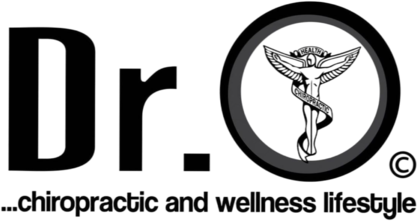-
Call: (214) 813-3516Call: (214) 813-3516
-
6251 West University Drive Suite 101 McKinney, Texas 75071
Class IV Laser Therapy
Class IV Laser Therapy
FDA-CLEARED
Class 4 laser therapy is a powerful medical treatment that utilizes a high-powered laser to promote healing in damaged tissues. Primarily targeting musculoskeletal conditions like arthritis, tendonitis, back pain, sports injuries, and wound healing, it offers effective relief and rehabilitation.

A Non-invasive and Comfortable Treatment
Quicker recovery
The use of light photons allows for deeper tissue penetration, increasing cell energy and promoting faster nutrient absorption. This aids in the repair of ligaments, muscles, and tendon cells, fostering a quicker recovery process.
Greater penetration
Class IV laser treatment possesses increased laser light power, enabling light photons to reach deeper levels within the tissue. This is effective for addressing pain in muscles, tendons, and ligaments that is hard to handle by other treatments.
Deliver the maximum results with Class IV laser therapy. This treatment uses a high-powered laser to penetrate into tissue, increasing blood flow and relieving pain. It can also enhance the healing process in muscles, bones, ligaments and tissues. Improve your quality of life with Class IV therapeutic laser!
Class IV laser treatment works by a process called photobiomodulation. The human tissues can absorb light photons and trigger a series of biological responses. The results of this treatment are: enhancing oxygenation in tissue, increased ATP production of cells and expanded blood vessels. Laser treatments vary drastically in terms of emitted light power.
THE MUSCULOSKELETAL SYSTEM
Class iv laser therapy can penetrate deep into the tissue and address diseases and injuries in deep muscles and bones. Compared to low-level laser devices, Class 4 lasers offer greater treatment depth and faster treatment speed, ensuring optimal therapeutic outcomes.
MULTIPLE TYPES OF PAIN
Class 4 laser therapy is a highly effective treatment for various types of pain, including arthritis, muscle pain, and neuralgia. By delivering high-energy light to body tissues, it stimulates local blood circulation and cell regeneration. This not only reduces pain but also accelerates the healing process, resulting in significant relief and improved well-being.
CLINICALLY USED FOR
- Pain (neck pain, back pain, shoulder pain, knee pain, etc.)
- Arthritis
- Sports injuries (sprains, strains, tendonitis, etc.)
- Plantar fasciitis
- Carpal tunnel syndrome
- Fibromyalgia
- Tennis elbow
- Golfers elbow
- Bursitis
- Sciatica
- Herniated disc
- Frozen shoulder
- TMJ disorder
- Migraines/headaches
- Peripheral neuropathy
- Wound healing
- Scar tissue reduction
SPORTS INJURIES
Class 4 laser therapy utilizes photobiomodulation to promote rehabilitation and treatment of sports injuries. By delivering high-energy light to damaged tissues, it stimulates local blood circulation, reduces inflammation and accelerates the recovery process. In addition, it can increase cell metabolism, enhance immune system function, and produce pain-relieving effects and other biological effects.
WOUND HEALING AND SCAR TISSUE REDUCTION
Class 4 laser therapy employs red and near-infrared light to enhance cellular energy and promote increased cell proliferation. This remarkable approach plays a pivotal role in fostering the healing of wounds and scar tissue reduction. It stimulates cellular metabolic processes and modulates signaling pathways responsible for wound repair. These pathways encompass crucial functions like cell migration, DNA synthesis, cell replication (mitosis), and protein secretion.
NEUROPATHIC PAIN
Class 4 laser therapy effectively alleviates nerve sensitivity by reducing the presence of bradykinin, a peptide chain known for promoting inflammation. This reduction in inflammation commonly results in decreased pain levels. Laser therapy offers a multi-faceted approach to pain management, including diabetic neuropathy, postherpetic neuralgia, and trigeminal neuralgia.
OTHER CONDITIONS
Class 4 laser therapy has shown potential for treating conditions like fibromyalgia, temporomandibular joint disorders, and migraines. Studies suggest that Class 4 laser therapy can reduce pain and improve function in patients with these conditions.
LASER THERAPY
& EFFECTS
More than half (up to 90% with lower wavelengths) of the laser energy is absorbed by the skin and subcutaneous tissue. Successful clinical outcomes for deeper conditions require treatment from lasers that have a higher wavelength and output. If the manufacturer did not engineer the therapeutic laser for continuous energy output from the beginning, then the laser is probably a surgical laser (designed to cut) converted to a therapeutic laser by pulsing energy output to avoid burning you. Pulsed lasers interrupt energy delivery reducing total dosage of energy when compared to continuous lasers given the same treatment duration.
Laser Therapy delivers light energy to promote tissue repair and growth. The Laser accelerates wound healing and decreases inflammation, pain, and scar tissue formation. Class IV Laser Therapy is a non-invasive and safe treatment for chronic pain management, wound healing and soft tissue repair.
Yes. Numerous clinical trials and research studies have verified its effectiveness across various conditions. These studies have shown positive outcomes in pain reduction, wound healing, improved tissue repair, decreased inflammation, and enhanced rehabilitation. Additionally, objective measurements such as imaging techniques also validate this. These scientific evidences underscore the efficacy and credibility of laser therapy as a safe and beneficial treatment modality.
The laser light interacts with tissues at the cellular level, leading to increased metabolic activity. This promotes enhanced energy production and improved cellular function. Laser therapy also facilitates increased circulation, allowing for better oxygen and nutrient delivery to cells and removal of waste products.
Additionally, it can stimulate the production of ATP, which plays vital roles in tissue repair. Overall, laser therapy triggers positive cellular responses that contribute to healing and improved physical functioning.
During each painless treatment, laser energy increases circulation, drawing water, oxygen, and nutrients to the damaged area. This creates an optimal healing environment for the reduction of inflammation, swelling, muscle spasms, stiffness, and pain.
- Manual Therapies:
- Soft Tissue Release
- Cupping,
- Dry Needling
- Electrostimulation
